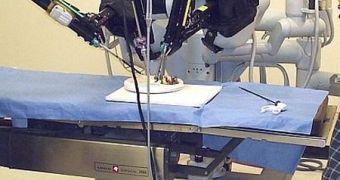A group of six European universities has just begun a collaboration that could see the development of the first World Wide Web for robots. The reason why this is desirable is because the machines, especially those working in various industries, and in the field of medicine, could thus “learn” from each other as they each acquire new skills in what they do. This would save people from having to invest heavily individual upgrades for each machine. As such, when one innovation appears in one place, it will then spread across the world, to all robots connected to the network.
The RoboEarth Project is a collaboration of the Eindhoven University of Technology, the Philips Applied Technologies, the University of Stuttgart, the Swiss Federal Institute of Technology, the University of Zaragozm and the Technische Universitat Munchen. The European Commission is the force funding this research, which is at this point estimated to take about four years to complete. The entire operation will carry a price tag of about 5.6 million Euros, or $7.5 million.
Many experts working in the field of robotics dream of creating machines capable of roaming the human world freely, while carrying out tasks that could make our lives a lot easier. However, even the most advanced robots today can only perform tasks that have been programmed by human operators. Additionally, when completing a job at one location, and moving to do the same thing all over again in another place, it needs to start the entire process from scratch. What the RoboEarth Project wants to do is create a global memory database for robots, which will allow them to draw on the knowledge of other robots that performed similar tasks, and thus determine the appropriate course of action faster.
If they are made capable of drawing lessons from other robots, then the machines could easily learn not to fail where others did before them. But the most important thing about the new Internet for robots will be the fact that the instruments will become capable of performing tasks they were not initially programmed to carry out. This means they could become a lot more versatile, and also capable of handling a wider array of tasks. The experts behind the Project say that higher quality robot applications are an immediate consequence of the new World Wide Web for robots.

 14 DAY TRIAL //
14 DAY TRIAL //